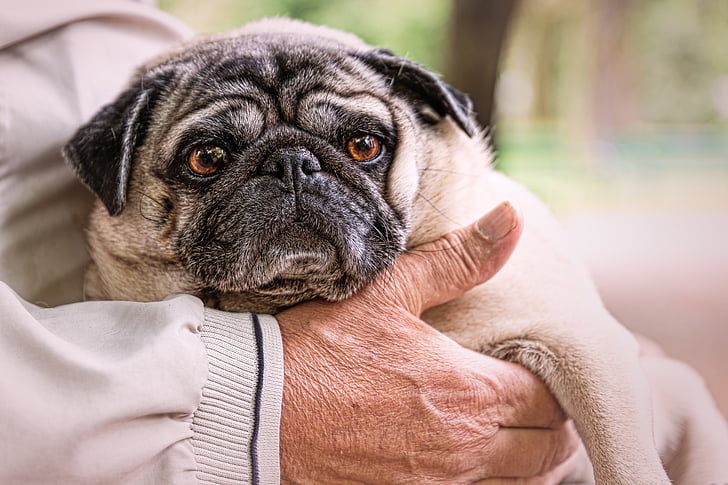Dogs don’t sweat to cool off as humans do, so it’s a good idea to make sure they are not exposed to excessively high temperatures. In order to cool off, they pant. Panting circulates the necessary air throughout their little four-legged bodies. But, there are some breeds that are more at risk of developing heatstroke than others. During the heat of summer, it’s important to keep your canine friend safe from the heat. Keep these dogs cool during the hot summer months.
Some obvious precautions to take is to never leave your dog inside a vehicle when it is hot outside. In terms of getting out, to be safe, it’s better to just forego the walk especially in the heat of the day. This is especially true if your dog is among the most susceptible to heatstroke breeds or is an older dog or overweight. If your dog must be outside, it’s also nice to provide a paddling pool or cooling fans.
While any dog can develop heatstroke if your dog is overweight or a large breed, you will need to pay extra close attention to recognize signs of heat intolerance or distress. There are a few who are more likely to have an issue with the heat. If any of these dog breeds are in your care when temperatures begin to heat up, it’s important that you take extra measures to keep them from overheating. The 9 most susceptible breeds include:
- Golden Retriever
- English Springer
- Pug
- Cavalier King Charles
- Greyhound
- French Mastiff
- French Bulldog
- Bulldog
- Chow Chow
Keep in mind that dogs who are purebreds have double the risk compared to their mutt-like or crossbred counterparts. The Chow Chow is the most vulnerable to falling victim of the heat with at least 17 times more likelihood of suffering heatstroke than their fellow Labrador retrievers who have a similar overheating risk as a crossbreed dog. One reason for this is most likely due to their thick double coat of fur. Similarly, the Golden Retriever also has a thick coat that could trap hot air.
One characteristic of most of the breeds that succumb to heat more readily is those who have a flat face or the brachycephalic breeds. These dogs already have a harder time catching their breath.
Learn to look for signs that your dog is becoming overheated. These include behavior such as panting that becomes noisy or more frequent and constant. The overheating dog will probably look distressed and present a dark, blue, or red tongue and gums. The tongue may even look longer than it normally does. The dog wrestling with heat might appear confused, acting strange as if they are having a fit, unsteady when standing or walking, or may lie down or even collapse. The dog might not be interested in food or even develop diarrhea or vomiting.
Immediately get your dog into the shade, use cool water and cool airflow to gradually bring down their body temperatures. Try to avoid covering them with wet towels since it could actually trap heat more against their skin. Also, don’t let them lap up water to drink too rapidly. If your dog does not seem to cool down successfully after efforts are made to move them to a cooler environment or to make their setting cooler, do not hesitate to seek veterinary help.

